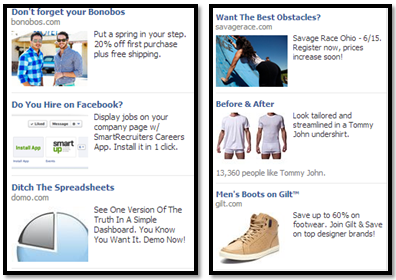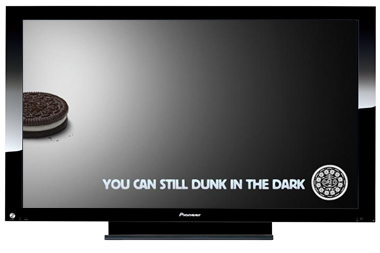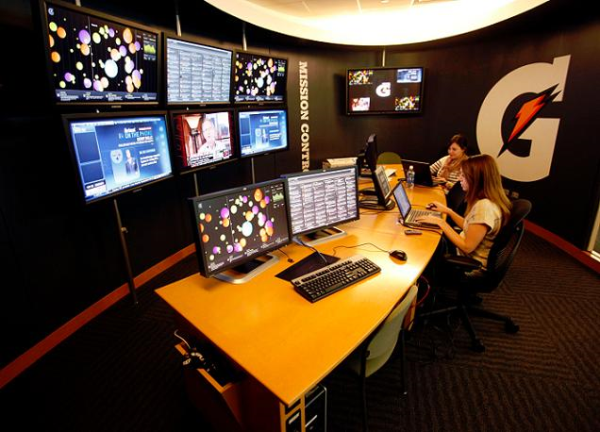Generally I do not write opinion posts about broad topics like “the future of advertising.” However, in two weeks I am speaking on a panel about this exact topic at the Inbound Marketing Summit 2013 in NY. This blog post summarizes my views on the topic, and covers in a greater detail what I am planning to share during the event.
Let me start with the quote by Al Pacino, from the movie Any Given Sunday:
“Because in either game – life or football – the margin for error is so small. I mean, one half a step too late or too early and you don’t quite make it. One half second too slow, too fast and you don’t quite catch it. The inches we need are everywhere around us. They’re in every break of the game, every minute, every second. On this team we fight for that inch. On this team we tear ourselves and everyone else around us to pieces for that inch. We claw with our fingernails for that inch. Because we know when add up all those inches, that’s gonna make the f***ing difference between winning and losing! Between living and dying!”
In advertising, like in life, timing is everything. Let me elaborate. I am on Facebook right now, and these are the ads that I’m seeing:

Did any of them get the timing right? Not likely. Traditional advertising is even worse. When I see a TV ad urging me to buy an Audi, there is no consideration for where I am in the buying cycle. The ad is not triggered by my recent social media complaints about my current car or any other recent or even real-time activities. Therefore, by the time I see an ad using this “shotgun” approach, the opportunity is gone and there were a lot of wasted ad dollars.
In the future, there is an opportunity to fix this. Here are 6 ways how this can be done.
1) Targeting, segmentation, and relevancy
As a prospective buyer, I leave clues. There is a certain way to how I navigate through a site, how I engage with social media, how I walk through the stores, etc. Raw data about these activities does not mean much, but if put together and analyzed, an advertiser has an opportunity to understand not just what I am interested in but what drives my interest and what makes me act (buy). Message has to be relevant, in order to accomplish this relevancy, organization has to be very careful about proper segmentation. Last month, HBR came out with a cover story “Advertising that works; how big data is transforming the art of persuasion.” It is clear that data is the key to understanding consumers and driving relevance. However, relevant content at the wrong time is not persuasive .
2) Real-Time Marketing and Ad Bidding
Everyone remembers Oreos Super Bowl Tweet: ‘You Can Still Dunk In The Dark’? Now, imagine if Oreos could bid on the fly and buy TV time to show the ad.

Here is another example. I enjoy watching tennis. Most of the time, I am working on my laptop when I watch the US Open. It would be quite engaging if the ads I see while I am on Facebook would change on the fly based on the score. So if Federer won a set, I might read – “play like Federer, play with Wilson.”
3) Marketing – Newsroom Style
Content is king, we’ve all heard that before. If this is true, we should learn from companies like CNN and Huffington Post about what makes for a good content. Bill Hagerty, former editor of The People, said that “originality makes a successful online news site.” The same is true for marketing.
Listening is the base for marketing. Brands like Gatorade have social media control centers. No doubt the future of advertising creating timely content that is original, relevant, engaging and meets the needs your audience has. Once you are able to create relevant content on the fly you can take real advantage of the real-time marketing.

4) Marketing with Google Glass and other Emerging Wearable Devices
Doing marketing in real-time means that you have to be present in the moment. That’s why mobile advertising is on the rise. Google Glasses and similar products will take this to the next level. Imagine you are at Gap. You are looking at jeans, and Google Glasses tells you that a specific pair will fit you well based on your style and budget, and social media patterns. Gap will already know that you “Like” their brand, and based on your calendar, it knows that your birthday is coming up. In Google Glass, a message appears “Gap wishes you a Happy Birthday! This pair of jeans is 20% off.”
5) Predictive Analytics
In order to really get the timing right, predictive analytics is very, very important. You have to anticipate what content to create and when to push it out. The first 4 areas prepare you to be in the position to be on time, predictive analytics helps you arrive on time. In college, I learned about 4 Ps of marketing – price, place, product and promotion. Right now, I am looking at my Facebook Bonobos ad. They got those 4Ps right, but I am not interested. Here’s why:
- Price is right, they know it – I purchased before.
- Place is right – I am on Facebook, I see an ad.
- Product is great – I never returned their products.
- Promotion – I purchased their products at full price, so the 20% off sounds great.
- Timing – I just purchased a few t-shirts; it is pretty cold in Cincinnati, and I need a sweater; my friend’s birthday was a week ago, and that’s when I was looking for a cool, hip gift. I will buy their product again, but not at this time.
When we do not buy products, we often say not now. Predictive analytics can help advertisers understand when that moment of now is going to take place.
6) Agile Marketing
We have to learn to create advertising spontaneously or else by the time it is done it is outdated. Iterative marketing campaigns are perhaps the future of advertising – develop a campaign, test it, analyze it, refine it, reengage. As the result, we will validate our learning and will have a better grasp at what the audience wants before spending millions of dollars. The ability to react to the actions of customers and prospects will determine campaign effectiveness. Agile means responding to change, and change is inevitable.
Summary
Consumers often do not like advertising because they see it as interruption to what they are doing, to what they are thinking about. The only way to solve this is to anticipate those moments when consumers are making decisions and to be prepared to engage. The future of marketing is being on time.
“It’s always about timing. If it’s too soon, no one understands. If it’s too late, everyone’s forgotten.”
― Anna Wintour

